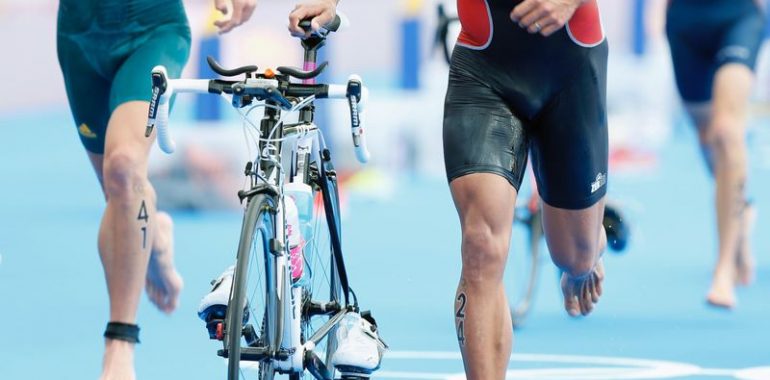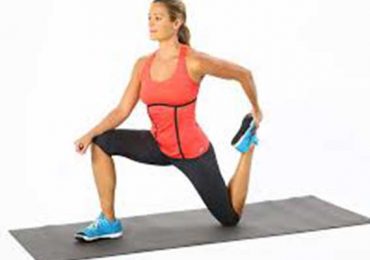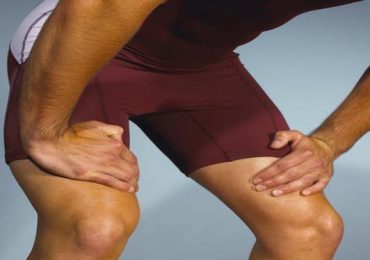Knee Cap Pain | Patello-Femoral Pain
Damian Wyard, Physiotherapist, in Downtown Toronto, talks about a common type of knee pain and how Physiotherapy and Pilates, using the classic rehabilitation equipment, can be combined to treat it.
What is it? This is usually the first thing patients will say about a superficial knee pain that is hard to localize, but comes from under and around the knee cap. It is hard to localize and can vary from under the knee cap or around the sides. It is common with runners, cyclists, but can affect people who do not exercise as well. It is one of those injuries where there is not one specific cause. We do know that the pain is caused by irritation under the knee cap. There are many soft tissue structures under and around the knee cap that can be the source of pain. The International Patello-Femoral Reseach Group has reached a consensus that the cause of the condition is multi-factorial and each person has a unique presentation. Patello-Femoral is the medical term used to describe this type of knee pain.
How we assess pain coming from the knee cap.
As there are many different soft tissue structures around the knee that cause pain, we have to exclude other diagnoses. Knee pain can come from the patella tendon or the fat pad under the tendon. Also deeper structures in the knee such as cartilage and meniscus can be injured. There are also more traumatic injuries such as ligament tears, but that is the subject of another blog. There are some common scenarios and pain presentations that help us assess that it is knee cap pain. Your history will indicate when it hurts and how. Common scenarios include pain with stairs, siting for long periods, walking up and down hills, running and biking. Over-loading the knee with any activity can stress the soft tissue structures, so we will ask you about your training regime and recent activity levels.
Biomechanics can also play a role. We look at your alignment from the pelvis to the foot. Muscle weakness in the hips and feet can impact the knee. We see many people who have muscle imbalances between their quads and gluteal muscles. We test your flexibility and strength of the hip and knee muscles. We are looking for the reasons why you have the pain that are specific to you. If there is no sudden trauma, then its not necessary to have any X-rays or MRI as the clinical tests will determine the causes.
How we treat knee cap pain.
Ultimately this is guided by the outcome of your assessment. The International Patello-Femoral Researach Group just released a consensus statement on guidance for treatment. The 41 member panel concluded that exercise-based treatment is effective in treating pain in the short, medium and long term. They also recommend that hip and knee exercises be combined as part of the rehabilitation. Foot orthotics, taping and manual therapy can also be used as adjunctive therapies with the exercise recommendations. Interestingly, there was no research to support custom orthotics for this type of knee pain. So be careful when someone advises you to spend $500 on custom orthotics, when you can find over the counter othotics at a fraction of the cost.
See our blog on Knee Pain and Stretching, particularly the long quadriceps muscle. Although its more complex than just stretching, this is definitely a common scenario we see in the clinic.
Physiotherapy and Pilates for knee pain.
We use the research recommendations, but then apply them to the factors causing your pain. We take the findings from your history and the physical assessment and devise an exercise-based treatment plan. With most patients we work on hip, knee and foot strength and gradually build more tolerance/strength in the knee. You need to be able to feel your muscles working so that the muscle activity moves from conscious to automatic. Some patients need to focus more on mechanics while others just need more strength and gradual reloading of the knee. Pain can sometimes be about hyper- sensitivity rather than actual damage. In this scenario we reload your knee with exercises to reduce this sensitivity.
The Pilates equipment is ideal for combining strength training with painful tissue. The variety of exercises and equipment allows us to combine hip, knee and foot strength and tailor it to you. Pain needs to be respected but the movements causing pain should not be avoided. The Pilates equipment allows us to perform those movements gradually without flaring you. It has to be a process of graded exposure to those painful movements. Exercises have to eventually be meaningful to everyday function as well as sport-specific. The Pilates reformer and Chair are well designed for lower extremity rehabilitation. Getting back to sport involves a gradual reintroduction to the activity.
Runners with knee cap pain need to start with specific drills to strengthen and reload the knee. Sometimes biomechanics of running and flexibility need to be adjusted with some rest from running. Reducing the intensity or time may be enough to manage symptoms without having to stop altogether. Eventually they need start a walk/run gradual program to get them to their pre-injury level.
The big take home message is that exercise has been shown to reduce pain and manage this condition. The research supports this exercise-based approach. There isn’t reliable research to support more passive treatments, like massage, electro-therapies and acupuncture for Patello-Femoral pain.



